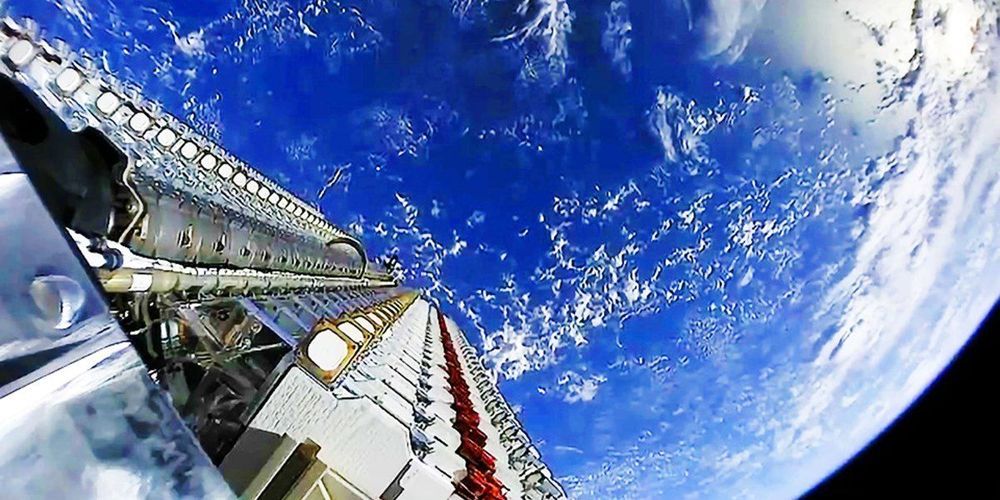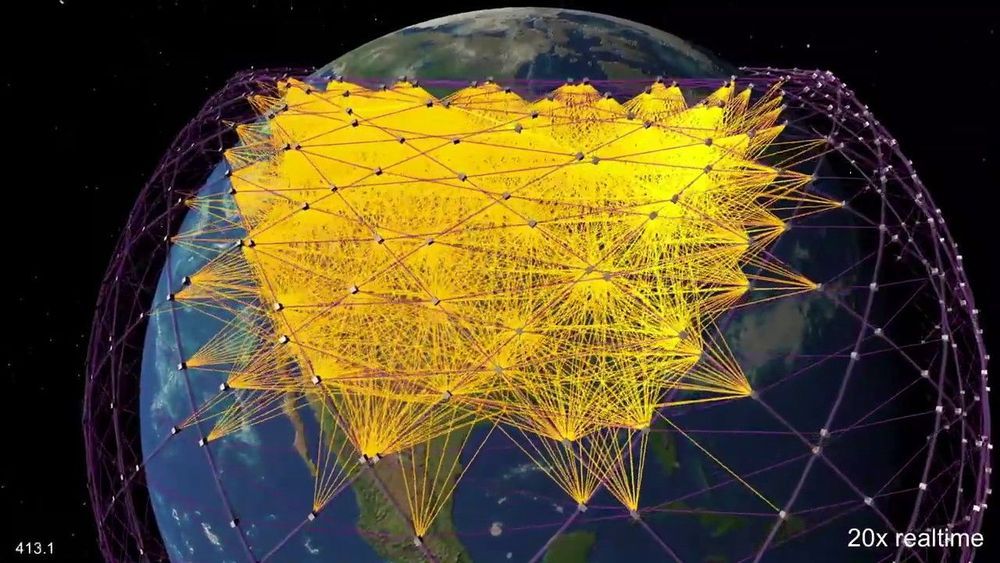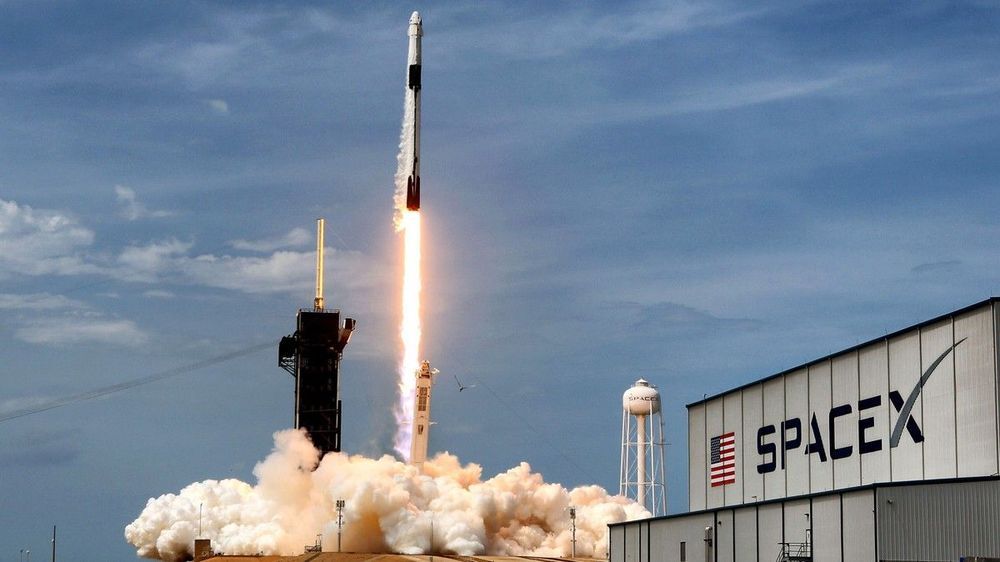New research shows Elon Musk’s broadband network could be tweaked to work as an alternative to GPS.



SpaceX CEO Elon Musk on Monday reiterated the likelihood that his private space company will likely take its Starlink satellite internet service public in the coming years.
“We will probably IPO Starlink, but only several years in the future when revenue growth is smooth & predictable,” Musk said in a tweet. “Public market does not like erratic cash flow haha.”
SpaceX leadership has previously discussed the idea, with company President Gwynne Shotwell in February telling a group of investors in February that “Starlink is the right kind of business that we can go ahead and take public,” adding that the company could spin it off.

 Berlin, 27 September 2020. – A New York bankruptcy judge has sent OneWeb’s Chapter 11 plan for creditor vote and approved OneWeb’s financing plan, Law360 reported.
Berlin, 27 September 2020. – A New York bankruptcy judge has sent OneWeb’s Chapter 11 plan for creditor vote and approved OneWeb’s financing plan, Law360 reported.
“A New York bankruptcy judge on Wednesday sent OneWeb Global’s $181 million equity-swap Chapter 11 plan to a creditor vote while approving $235 million in new financing that the satellite internet startup said will go toward restarting its launch program,” Law 360 reported.
According to the report, OneWeb’s counsel told U.S. Bankruptcy Judge Robert Drain that it had secured full creditor consent for the plan.


The United States Air Force signed a deal with SpaceX valued at around $28 million in 2018, to assess the Starlink network’s performance on military platforms. The Air Force is actively experimenting with how space-based internet could enhance Multi-Domain Operations (MDO). These operations require moving vast quantities of data between the five domains of warfare: ground, sea, sky, outer space, and cyberspace. The military needs a reliable communication system at all times to protect and defend the country from potential threats. The assessment of Starlink will offer the military insight on whether it should purchase Starlink service long-term.
U.S. Air Force Chief for Acquisition Dr. Will Roper, who serves as the principal adviser for technology research and development, met with reporters to discuss a live-fire military exercise that took place early this month, Investors news reports. During the conference, Roper shared SpaceX’s Starlink network was tested during the live-fire exercise as part of the military’s Advanced Battle Management System (ABMS). – “What I’ve seen from Starlink has been impressive and positive,” he told reporters on Wednesday. “They’re cleverly engineered satellites cleverly deployed. So, there’s a lot to learn from how they’re designed and I think that there’s a lot we can learn from them.”
Roper shared that the Air Force connected Starlink to a “variety of air and terrestrial assets”. Starlink terminals are hooked to the cockpit of a Boeing (BA) KC-135 Stratotanker aircraft to assess the network’s performance while the airplanes fly.

Part of my series countering common misconceptions in space journalism.
This blog is a follow on to my original post on Starlink. Starlink is an emerging high performance satellite-based internet routing network developed by SpaceX. Its ultimate purpose is to become the de-facto internet backbone provider, connect billions more people to the internet, and revolutionize access to space.
The usual disclaimers apply. I have no relevant inside knowledge of Starlink operations. I’m not an expert in networking, and unlike Starlink’s staff I haven’t spent years working only on this problem. In fact, I’m usually deeply confused at the best of times. But I had a cool idea and I wanted to share it.

A research and development lab of the Chinese tech giant Huawei Technologies in the southern city of Dongguan caught fire, producing large clouds of thick grey smoke. Locals caught the incident on camera.
The videos show plumes of smoke coming from the building’s top floors, and largely obscuring the sky above the facility. According to the local fire department, the flammable sound-absorbing cotton which the facility was using may be the main source of the blaze.
🚨 #BREAKING – A #Huawei research laboratory burns in 🔥 #Dongguanpic.twitter.com/BGqR7Hmz0J — ISCResearch (@ISCResearch) September 25, 2020

From the beginning, SpaceX has had a goal of bringing high speed internet service to underserved locations, creating competition in areas that currently have limited options or, in many cases, monopolies causing higher prices.
With its constellation of low orbit satellites, Starlink will be able to shake up the broadband industry by offering a new category of broadband. Without the need to place expensive infrastructure like underground or pole-based wiring required for current broadband options, SpaceX could more easily reach rural areas and begin to close the digital divide.
A study from Broadband Now shows that, in addition to working toward closing that gap, introducing a new internet provider could reduce the price of internet service by up to 40%. The chart below shows how adding additional providers in an area significantly reduces the average monthly cost of internet service.


OneWeb is set to resume launches with Arianespace in December to build out its Low-Earth Orbit (LEO) satellite internet constellation. The satellite operator announced Monday that Arianespace will provide 16 more launches, each placing another 34 to 36 satellites into OneWeb’s constellation.
This update comes as OneWeb is in the midst of a restructuring deal with the U.K. government, Bharti Global Limited, and Hughes Network Systems after filing for Chapter 11 in March. The U.K. government and Bharti Global Limited announced in July they formed a consortium to acquire OneWeb, each providing $500 million. Hughes joined the consortium in July with a $50 million investment. The deal is still subject to regulatory approval and is expected to close by the Fourth Quarter of 2020.
OneWeb has 74 satellites in orbit and its return-to-flight launch in December will increase the fleet to 110 satellites. The company plans to complete the deployment of its constellation by the end of 2022, and start commercial services by the end of 2021. The initial service regions above 50 degrees North latitude will include the United Kingdom, Alaska, Northern Europe, Greenland, Iceland, the Arctic seas and Canada.